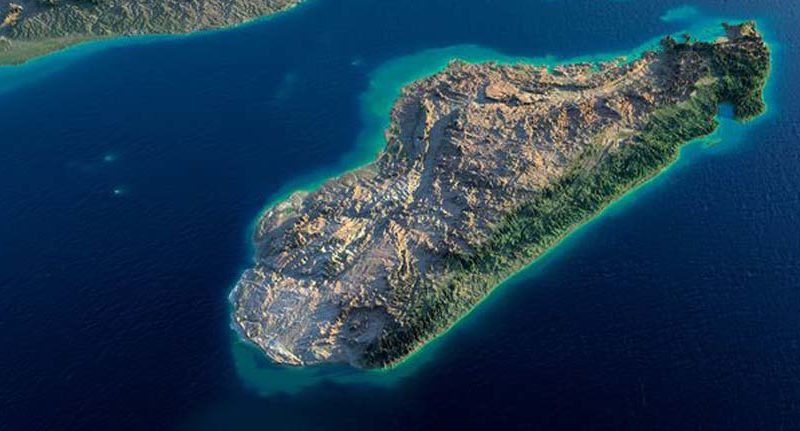A big red island with a touch of greenery
On the side of the South East side of Africa is Madagascar, the fifth largest island in the world. Neither African nor Asian, despite its oriental influences, the cultural crossroads of Madagascar, unique primates and giant baobabs lend the island a very particular identity.
Geography and climate
With an area of 587,000 km2, Madagascar is the fifth largest island in the world, comparable in size to Kenya.
The eastern part of the island is still covered by a narrow strip of lowland forests that lead to steep hills and the central highlands, with volcanic mountains rising to the north, in the Tsaratanana massif.
The North West coast forms a series of natural coves, with vast inland plains, while the South West region consists of plateaus and deserts. Due to the localized red soil of the island, Madagascar was called the “Great Red Island”.
In Madagascar, the climate is tropical along the coast, temperate in the interior zones, and arid in the south. The island has a warm and rainy climate from November to April, and cooler and dryer from May to October. The South East trade winds sweep the island, in addition to the occasional cyclones – which can sometimes be very destructive.
Nature
The island of Madagascar separated from the African continent about 165 million years ago. Since then, a unique range of plants and animals have evolved, including many endemic species (species found nowhere else in the world). These characteristics have led some scientists in Madagascar to call it the “seventh continent”.
You say lemur? All 50 known species of these small primates are found only on this island. These include the Indri, the largest living lemur; Black lemurs, which feed on ripe fruit, leaves, insects and flowers, and the hairy dwarf lemur with ears that has long wavy hair around its ears.
The eastern coast is home to tropical forests, while the western and southern sides of the island are covered by dry tropical forests, thorn forests and deserts and xeric shrublands. Dry forests are home to hundreds of endemic plants and animal species – for example, 7 species of baobabs, compared to just one throughout Africa.
Population & Religion
Despite the small distance between Madagascar and Africa, the roots of many of the Malagasy people are traced back to Asia. A desert island until the landing of Austronesian seamen 2,000-1,500 years ago, the population has now increased to about 20 million people. A majority of the population lives on subsistence farming, especially rice and livestock.
The strap between Madagascar and Asia still persist today, with the Malagasy language drawing 90% of its vocabulary on the southern language of Borneo Maanyan. French is spoken among the educated population of this former French colony.
Some 45% of the Malagasy are Christian, although a significant number have a belief including the cult of the dead. Islam is made up of about 7-10% of the population. About half of the country’s population practices traditional religions, which rely on the links between the living and the dead.
Economy and development
Tourism, textiles and light manufactures exports, agriculture (Madagascar is the world’s largest producer of vanilla) and mining are the main sources of income of the island.
For more information about Madagascar or about travel in Madagascar, do not hesitate to contact us
Despite this enormous economic potential, Madagascar remains paralyzed by poverty, the mortality rate of newborns is high and the adult illiteracy rate remains at 30%.
HT AGENCY TOURS
Luxury Madagascar with the best luxury African safari tours packages. Discover your next perfect destination with HT Agency Tours

